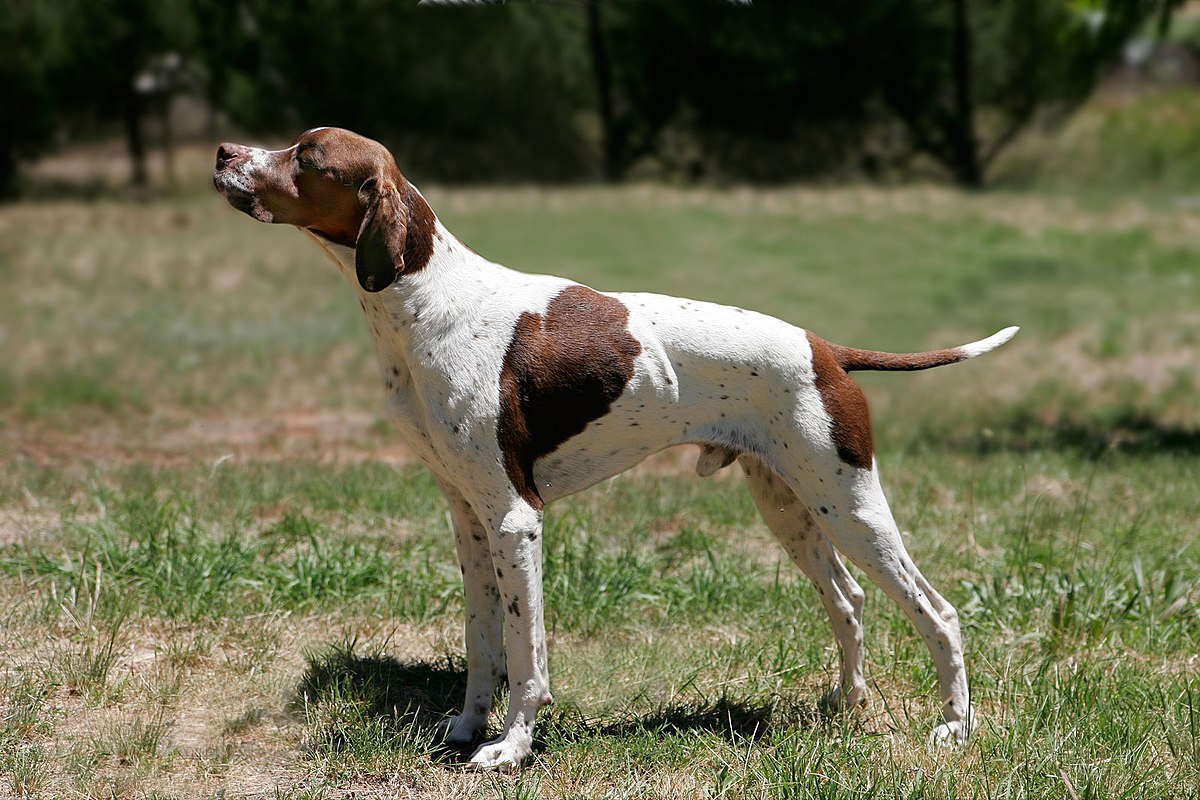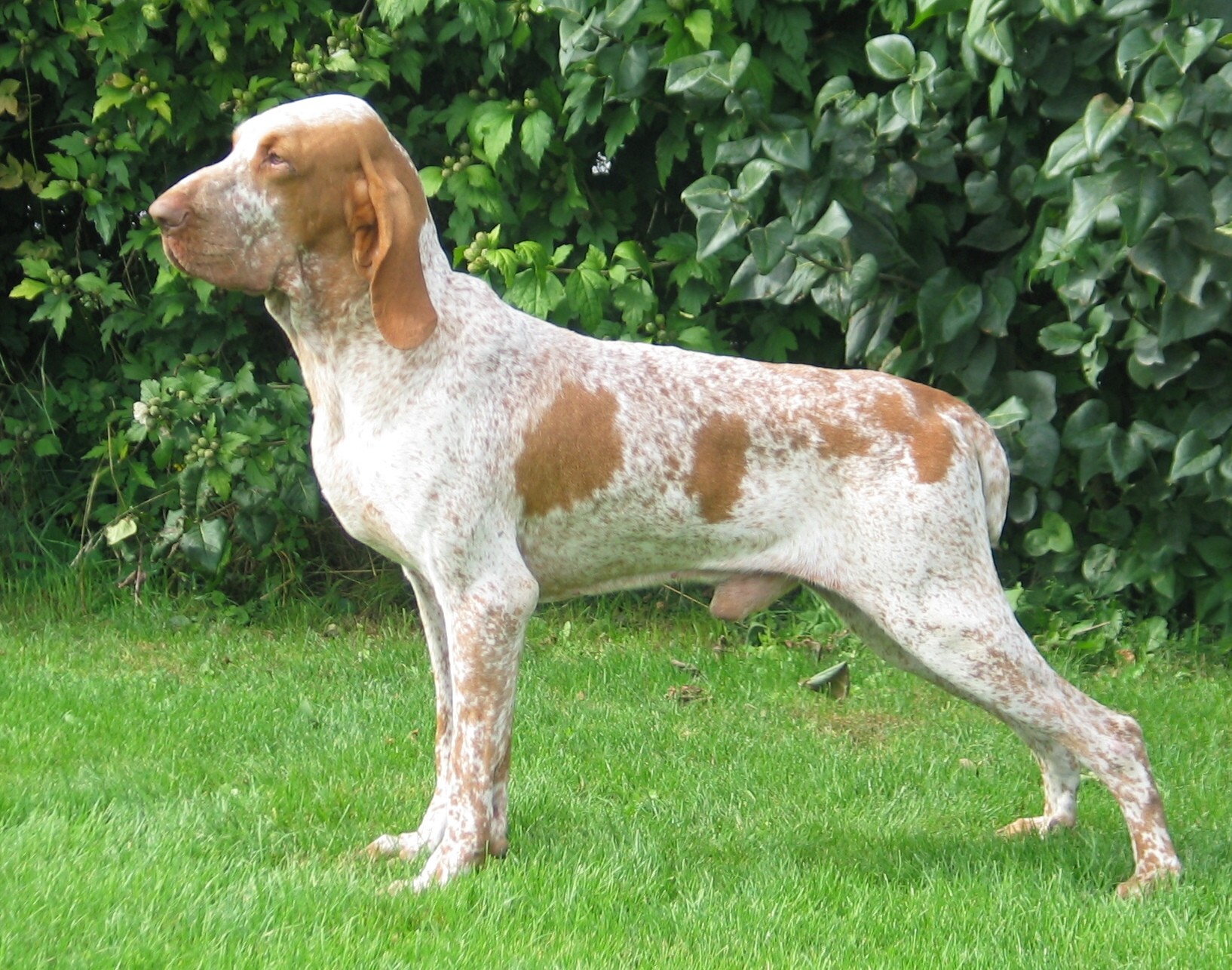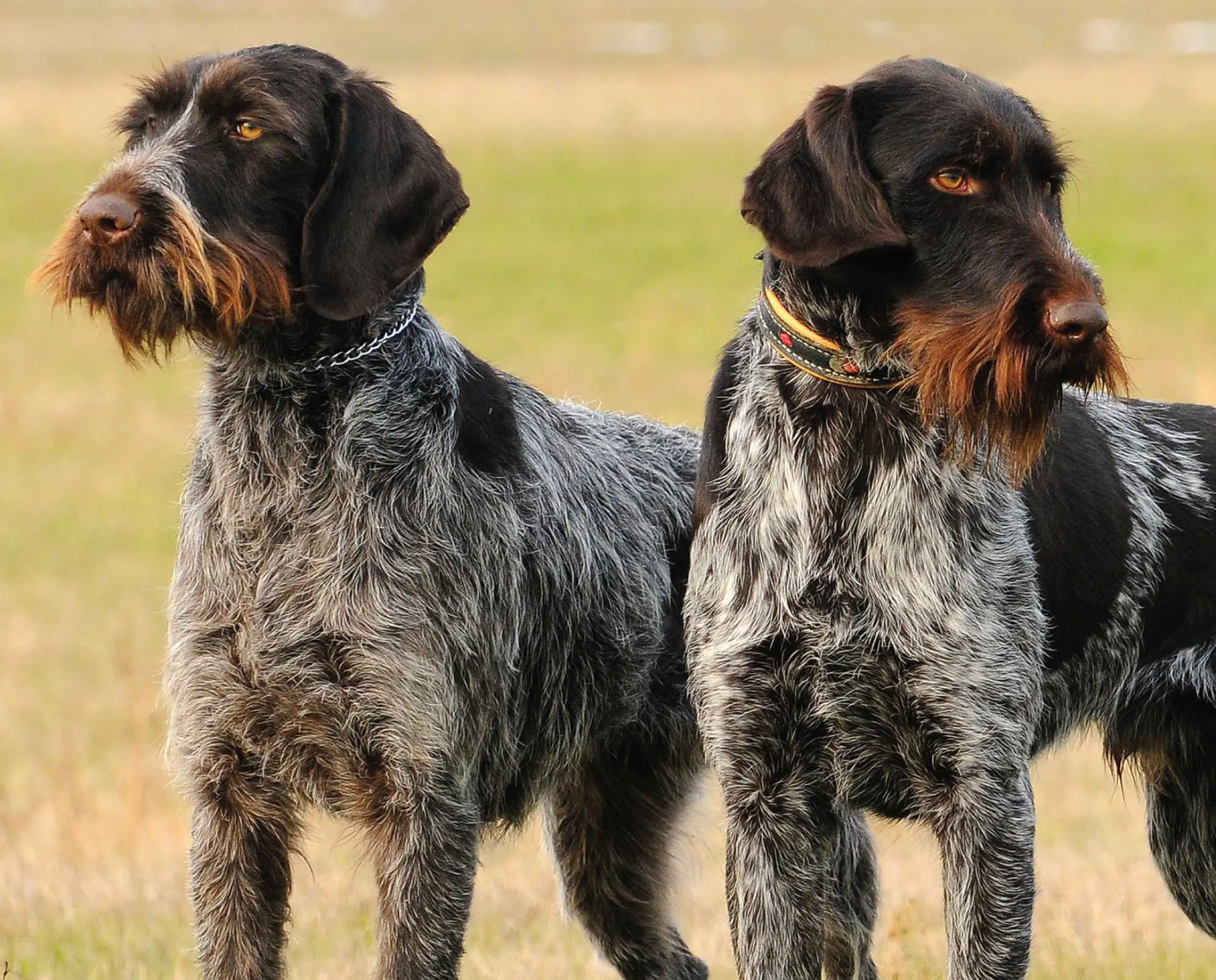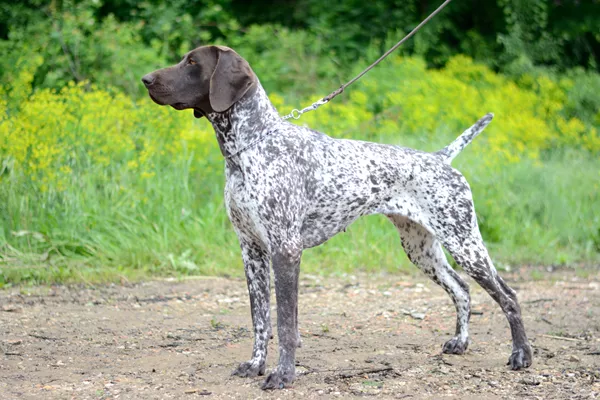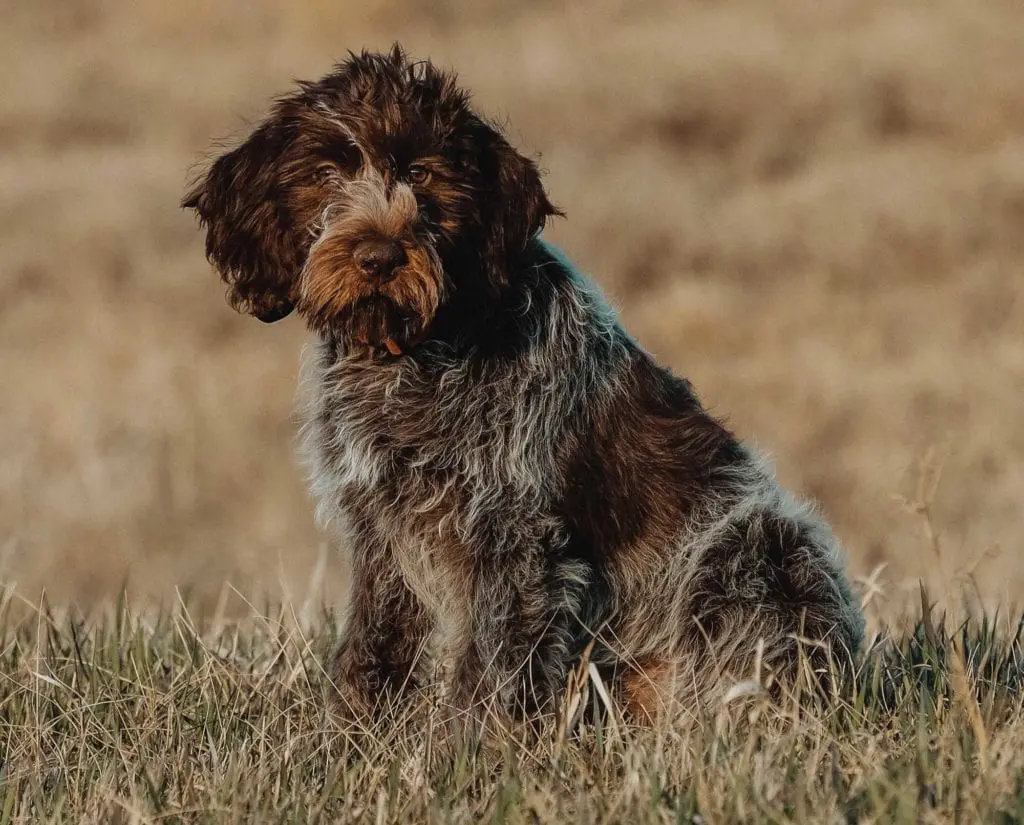Welcome to pawtrix.wiki, your one-stop location for everything about dogs! Today we’re exploring one of the sporting group’s most distinguished members – the English Pointer. Revered for their incredible hunting abilities and striking appearance, these dogs have been trusted hunting companions for centuries while maintaining their status as elegant show dogs and beloved family pets.
The Aristocrat of Sporting Dogs
The English Pointer stands apart in the sporting world with a silhouette that’s instantly recognizable. Their sleek, athletic build combined with a noble stance has earned them the reputation as “the Cadillac of bird dogs” – elegant yet powerful, refined yet capable of incredible feats in the field.
Unlike their retriever and spaniel cousins who work primarily after the shot, Pointers excel in the moments before – finding game and “pointing” its location with their trademark stance. With a rigid tail standing at attention and one front paw lifted delicately off the ground, the Pointer’s ability to freeze in this position for extended periods is something between art and athleticism.
Historical Roots: From Mediterranean Hunting Fields to British Estates
The English Pointer’s ancestry contains one of the most interesting origin stories in the dog world. While many assume a strictly British heritage, these dogs actually trace their lineage to Mediterranean hunting traditions.
Evidence suggests the breed developed from Spanish Pointers, which were brought to England in the early 1700s. British sportsmen found these dogs invaluable for locating game birds, particularly after the invention of the shotgun revolutionized bird hunting methods. While the Spanish Pointers had the instinct, they were considered too heavy and slow-moving for British tastes.
English breeders crossed these Spanish dogs with lighter, faster breeds such as Greyhounds, Foxhounds, Bloodhounds, and various setters. The result was a more refined, agile dog that maintained the incredible pointing instinct but could work tirelessly across the vast hunting estates of England. By the late 1800s, the English Pointer we recognize today had been established.
Physical Characteristics: Form Follows Function
The English Pointer’s appearance epitomizes the phrase “form follows function” – every aspect of their physical build serves their hunting purpose:
Size and Structure
- Males: 25-28 inches at the shoulder, 55-75 pounds
- Females: 23-26 inches at the shoulder, 45-65 pounds
- Build: Athletic and well-muscled without being bulky
- Chest: Deep chest for lung capacity and endurance
- Legs: Long, straight legs for covering ground efficiently
Signature Features
- Head: Slightly domed with a distinct stop
- Muzzle: Long, deep muzzle with powerful jaws
- Ears: Set high, hanging close to the head
- Tail: Strong at the root, tapering to a fine point
- Expression: Alert and intelligent
Coat and Colors
The Pointer’s coat is short, dense, and glossy – practical for working through brush without collecting burrs and debris. They appear in various color combinations:
- Liver and white
- Black and white
- Orange and white
- Lemon and white
- Solid colors (less common)
The most distinctive patterns include large, clearly defined patches on a predominantly white body, or “ticked” patterns where tiny flecks of color create a speckled effect.
The Pointer Personality: More Than Just a Working Dog
Despite their serious work ethic, English Pointers have complex and endearing personalities that make them wonderful companions beyond the hunting field:
The Field Personality
In the field, Pointers transform into focused professionals:
- Intense: Single-minded determination to find birds
- Independent: Can work at a distance from handlers
- Tireless: Seemingly endless energy when working
- Intelligent: Problem-solving to locate and track game
- Responsive: Attentive to handler signals and commands
The Home Personality
At home, many Pointers reveal a completely different side:
- Affectionate: Often seeking physical contact with family
- Gentle: Particularly kind with children
- Laid-back: Surprisingly calm indoors when exercised properly
- Dignified: Carrying themselves with quiet confidence
- Sensitive: Responsive to family emotions and atmosphere
This duality – the intense field worker and the gentle house companion – is what makes Pointers such versatile dogs. They can transition from tireless hunting to gentle couch potato, though this balance requires proper exercise and training.
Training and Exercise: Channeling Natural Instincts
Pointers are athletes born to run. Understanding their exercise needs is crucial for anyone considering the breed:
Exercise Requirements
- Daily needs: 1-2 hours of vigorous exercise
- Variety: Running, hiking, swimming, play sessions
- Mental stimulation: Scent games, training challenges
- Space: Access to safe, open areas for running
The Pointer Challenge
Without sufficient exercise, Pointers can become:
- Restless and destructive
- Anxious or hyperactive
- Prone to nuisance behaviors like excessive barking
- Unable to settle indoors
Training Approach
Training Pointers requires understanding their independent nature:
- Start early: Puppyhood socialization is essential
- Positive methods: Respond well to rewards and praise
- Consistency: Clear rules and boundaries
- Patience: May be stubborn about non-hunting tasks
- Respect intelligence: They need to understand why
One training challenge unique to Pointers is “whoa” training – teaching them to stop instantly and hold position. This crucial field command translates well to everyday life, teaching impulse control and preventing dangerous situations.
Health and Longevity: The Pointer Prognosis
Pointers are generally healthy dogs with a life expectancy of 12-15 years. Being a relatively ancient breed that developed before extreme physical characteristics became fashionable, they’ve maintained a functional, balanced structure that serves them well.
Common Health Concerns
Like all purebred dogs, they have some breed-specific health issues:
- Hip dysplasia: Joint malformation
- Epilepsy: Seizure disorders
- Eye conditions: Including cataracts and progressive retinal atrophy
- Heart issues: Including aortic stenosis
- Allergies and skin conditions: Various sensitivities
Preventative Care
Responsible ownership includes:
- Regular veterinary check-ups
- Maintaining appropriate weight
- Proper dental care
- Regular exercise
- Quality nutrition
- Genetic testing for breeding stock
Living with Pointers: The Day-to-Day Reality
Bringing a Pointer into your home means adapting to their unique lifestyle needs:
Home Environment
- Yard space: Securely fenced yard strongly recommended
- Exercise access: Proximity to safe running areas
- Indoor space: Room to move comfortably
- Climate considerations: Limited cold tolerance due to short coat
Family Integration
Pointers typically relate well to all family members:
- Children: Generally excellent with kids, though exuberance may overwhelm toddlers
- Other dogs: Usually sociable with proper introductions
- Cats: Individual tolerance varies, early socialization helps
- Small pets: Strong prey drive may be problematic
Grooming and Care
One advantage of Pointers is their minimal grooming needs:
- Brushing: Weekly with a soft brush
- Bathing: Only when necessary
- Nail trimming: Regular maintenance
- Ear cleaning: Check weekly, especially after field work
- Shedding: Moderate year-round
The Versatile Athlete: Beyond Bird Hunting
While bird hunting remains their primary purpose, modern Pointers excel in numerous activities:
Hunting Applications
- Upland game birds: Their specialized purpose
- Tracking: Following scent trails of wounded game
- Retrieving: Some have natural retrieving tendencies
Dog Sports
- Field trials: Competitive bird finding
- Hunt tests: Standardized hunting skills evaluation
- Agility: Natural athletes with speed and precision
- Obedience: Challenging but rewarding
- Tracking: Utilizing natural scenting abilities
- Canine freestyle: Highlighting their graceful movement
Therapy and Service
With proper temperament and training, some Pointers serve as:
- Therapy dogs in hospitals and nursing homes
- Emotional support animals
- Detection dogs for various substances
Finding Your Pointer: Breeder vs. Rescue
If you’re considering adding a Pointer to your family, you have two primary options:
Responsible Breeders
Look for:
- Health testing of breeding stock
- Proven working ability or show success
- Proper socialization of puppies
- Lifetime support and guidance
- Proper contracts and health guarantees
Pointer Rescue
Consider rescue when:
- You’re open to adult dogs
- You understand potential adjustment periods
- You’re prepared for unknown history
- You want to provide a second chance
Many Pointers end up in rescue due to owners underestimating their exercise needs or when hunting enthusiasts find a dog that doesn’t have sufficient hunting drive.
Pointer Variations: The Extended Family
While we’ve focused on the English Pointer, several related breeds share the pointing instinct:
Continental Cousins
- German Shorthaired Pointer: More versatile hunting abilities
- German Wirehaired Pointer: Rough coat for harsh terrain
- Vizsla: Hungarian pointer with distinctive rust-gold color
- Weimaraner: Silver-gray “ghost dog” with similar hunting style
- Bracco Italiano: Heavier, more substantial Italian pointer
These breeds share the basic pointing instinct but differ in coat, build, temperament, and specific hunting applications.
Is a Pointer Right for You?
The English Pointer isn’t for everyone. They’re best suited for:
- Active individuals or families
- Those with secure outdoor space
- People who enjoy outdoor activities
- Those willing to meet substantial exercise needs
- Families with older, respectful children
- Owners committed to positive training methods
They may not be ideal for:
- Apartment dwellers without access to exercise areas
- Very busy people with limited time for exercise
- Those seeking an extremely obedient, people-pleasing dog
- Families with many small pets
The Pointer Legacy: Paintings to Performance
Few dog breeds have been so prominently featured in sporting art as the Pointer. Their distinctive silhouette appears in countless paintings from the 18th and 19th centuries, often frozen in their characteristic pointing stance in picturesque hunting scenes.
This artistic legacy reflects their historical importance, but today’s Pointers continue to prove their worth in the field and home. Whether winning field trials, competing in show rings, or simply being beloved family members, these dogs maintain their ancient skills while adapting to modern life.
Final Thoughts: The Timeless Elegance of the Pointer
The English Pointer represents something increasingly rare in our modern world – a working breed that has maintained its original purpose for centuries while adapting to changing times. Neither over-bred for exaggerated features nor transformed into a mere companion, the Pointer remains true to its heritage.
For those willing to meet their needs, Pointers offer an unmatched combination of athletic ability, striking appearance, and devoted companionship. They connect us to centuries of sporting tradition while fitting surprisingly well into active modern households.
At pawtrix.wiki, we celebrate breeds that maintain this kind of integrity and purpose. The English Pointer, with its aristocratic bearing and athlete’s heart, certainly deserves its place among the most respected sporting dogs in the world.
Whether you’re considering adding a Pointer to your family, interested in sporting breeds, or simply appreciate these magnificent dogs, we hope this guide has illuminated the special qualities that make the English Pointer a true sporting classic.
